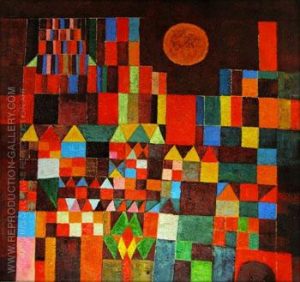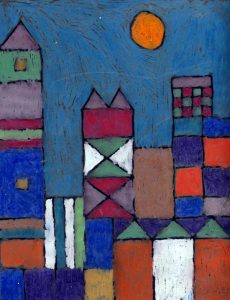Contemporary art is art produced by artists of the modern world who are exposed to global environments, diverse cultural needs, increasing urbanization, and an overpowering dependence on technology. These artists bring together traditional and modern themes and fuse them in a harmonious combination. They work in a wide range of mediums and produce art that is more “challenging and interesting” instead of “aesthetically pleasing”. This has led to growing importance of ideas like Conceptualism and Abstract Expressionism in the world of modern art today. And a key offspring of these transformative ideas is the art of cityscapes or urban landscapes. Starting with the impressionist paintings of Paris by Claude Monet to the realistic representation of Madrid by Antonio Lopez and abstract landscaping by Willem de Kooning, urban landscapes have formed a substantial chunk of the modern art scene.

Urban landscapes have increasingly become a significant way for modernists to express their feelings about the growing city culture, skyscrapers, and high-rise buildings. These artists choose to represent physical aspects of a city or urban area through their paintings, drawings, prints, or photographs. However, there is more to contemporary urban landscape that mere representation of physical aspects. The paintings can be either rich in minute details or barely capture a bird’s eye view. They can be high on hyperrealism or capture the sublime naturalism of a city. They can blend together suburban detritus and emotional emptiness with quality life and happy cities. They can draw inspiration from boroughs of the past while focusing on skylines of today. As is evident, the canvas is huge and opportunities innumerable. Modernists have made every possible attempt to tap into this vast ocean of urban landscaping.

Cityscapes have fascinated artists from around the world. “Boulevard Montmartre at night” by Camille Pissarro, “The Avenue in the rain” by Childe Hassam, “The City” by Fernand Leger, and the “Broadway Boogie Woogie” by Piet Mondrian are all great examples of modern cityscapes by masters in the field. The art has also touched parts of Asia through the “Night view of Saruwakacho” by Utagawa Hiroshige in Japan and “The New City of Feng” by Ding Guanpeng in China. It is now slowly inching its way into India and making a home here. India presents artists with a plethora of opportunities because of the stark differences between urban and rural India. Artists can see for themselves and gauge the progress of urban Indian landscapes. A number of modernists have risen to the scene and adopted contemporary urban landscapes as a means to express their association with development, progress, and sometimes fatigue. Shivani Garg is a prominent name in the arena. Shivani has been practicing art for almost a decade now, having realized her love for urban landscapes early on. Her chief inspirations have generally been masters of Abstract Expressionism and Minimalism: Paul Klee, Yogesh Rawal, and Matisse to name a few. Shivani’s cityscapes present a colorful front, portray vibrant thinking, and are free of stereotypical edges. This makes Shivani’s art appealing and attractive to the liberal human mind.



